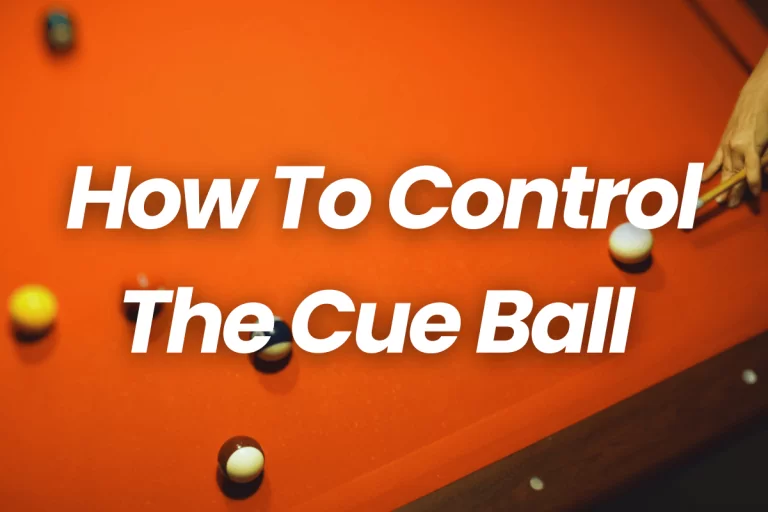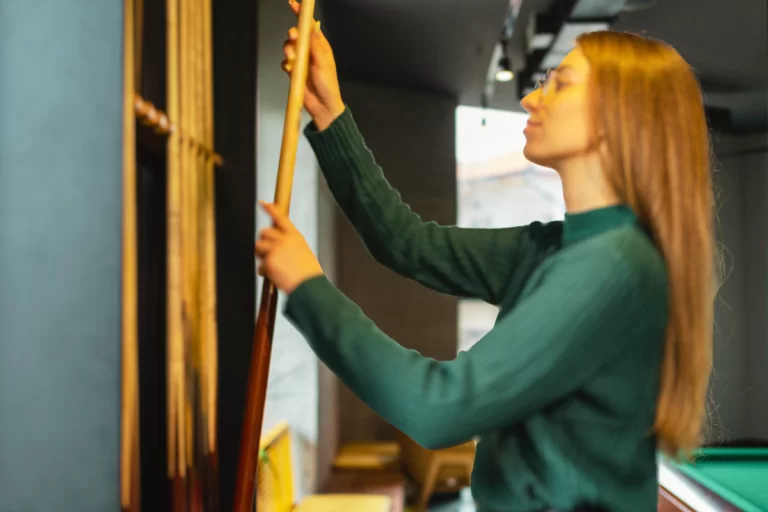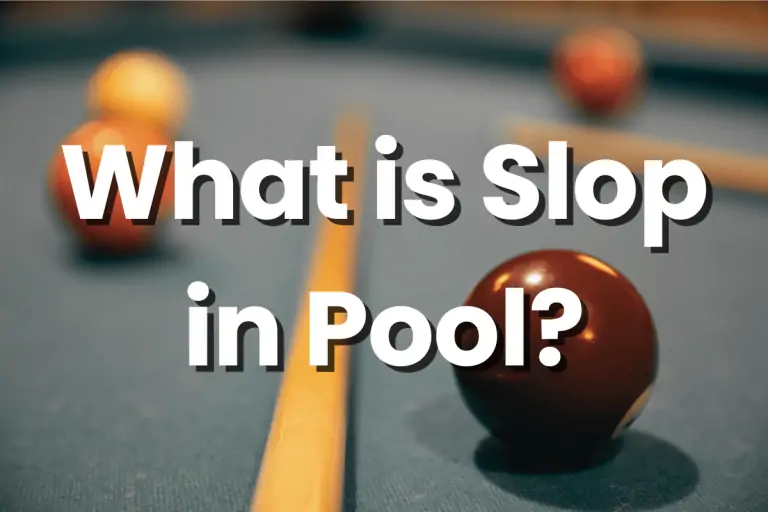Unveil the Thrilling World of One Pocket Rules (2024)
Have you ever heard of One Pocket Pool? It’s a fascinating variant of the pool that turns the traditional game on its head, introducing a whole new level of strategy and skill. Unlike the more common versions of the pool, One Pocket has a unique set of rules that make every game an intriguing challenge. Whether you’re a seasoned player or just curious about different pool games, understanding One Pocket rules is a great way to enhance your overall pool experience. In this post, we’ll dive into what makes One Pocket so captivating, covering the essentials you need to get started.
What is One Pocket Pool?
One Pocket Pool, a captivating variant of the traditional pool game, has been charming players for decades. Its origins are a bit of a mystery, believed to have evolved from earlier forms of pocket billiards in the early 20th century. What sets One Pocket apart is its unique blend of strategy and skill. Unlike in standard pool games, where players aim at any pocket, in One Pocket, each player is assigned just one pocket to target. This twist demands not just precision, but also strategic foresight and psychological savvy.
The appeal of One Pocket lies in its depth. It’s not just about making shots; it’s about planning, predicting your opponent’s moves, and sometimes, playing defensively. This strategic layer adds a chess-like element to the game, attracting enthusiasts who relish a mental challenge along with the physical skill of pool. Whether it’s carefully selecting which balls to aim for or skillfully positioning the cue ball, every decision in One Pocket is a step in a larger tactical battle. It’s this combination of mental and physical gameplay that has made One Pocket a beloved game among pool players who seek a test of wits as much as skill.
One Pocket Rules and Objectives
One Pocket pool, while intricate, is based on a set of straightforward rules and objectives. Understanding these is key to not only playing the game but also enjoying its strategic depth.
- Objective: The main goal in One Pocket is to pocket 8 balls in your designated pocket before your opponent does in theirs.
- Pocket Assignment: At the start of the game, each player is assigned one of the two corner pockets at the same end of the table. This is the only pocket they can legally score in.
- Break: The game starts with a standard break shot. The player breaking must ensure that at least one ball hits a rail after contact, or it’s a foul.
- Turns: Players take alternating turns. A turn continues as long as the player legally pockets a ball.
- Scoring: A point is scored for each ball legally pocketed in a player’s assigned pocket. The first to score 8 points wins.
- Fouls: Fouls include failing to hit a rail after contact, pocketing an opponent’s ball, or scratching (cue ball going into a pocket). Committing a foul results in a penalty, typically the loss of a point and the end of the player’s turn.
- Safety Play: A key element of the One Pocket strategy is ‘safety play’, where players strategically shoot to avoid giving their opponent a direct shot.
How to Play One Pocket Pool: A Step-by-Step Guide
Playing One Pocket Pool involves more than just sinking balls into pockets. It’s a game of strategy, precision, and foresight. Here’s a detailed guide from the break to scoring, along with some beginner tips and strategies.

The Break
- The game starts with a break shot. The player breaking should aim to scatter the balls without pocketing any or leaving easy shots for their opponent.
- Tip for Beginners: Don’t hit the balls too hard. A more controlled break can prevent accidentally setting up shots for your opponent.
Choosing Pockets
- After the break, each player chooses one of the two corner pockets at the foot of the table to be their target pocket for the entire game.
- Strategy: Observe the layout of the balls post-break to decide which pocket might offer more advantageous shots.
Taking Turns
- Players take turns trying to pocket balls into their designated pocket.
- Beginner Tip: Focus on shot accuracy rather than power. It’s about placing the balls, not just hitting them.
Scoring Points
- A player scores a point for each ball legally pocketed in their assigned pocket.
- Strategy: Plan several shots ahead. Think about not only your current shot but also how it will set up your next move.
Safety Play
- If you can’t make a shot, use a safety play. This means positioning the cue ball where it’s difficult for your opponent to make a successful shot.
- Beginner Tip: Practice cue ball control. It’s as important as pocketing balls.
Fouls and Penalties
- Avoid fouls like failing to hit a rail post-contact or pocketing the cue ball. Fouls typically result in a point penalty and the end of your turn.
- Strategy: Sometimes, it’s better to play a safe shot than risk a foul.
Winning the Game
- The first player to pocket 8 balls in their assigned pocket wins.
- Beginner Tip: Stay patient and focused. One Pocket is a marathon, not a sprint. Each shot is a step towards victory.
Remember, One Pocket is as much about outthinking your opponent as it is about outplaying them. Each shot is an opportunity to advance your position or thwart your opponent’s plans. Practice, patience, and strategic thinking are your best tools in this engaging game of pool.
Why One Pocket Pool is a Must-Try for Pool Enthusiasts
One Pocket Pool is not just another game on the table – it’s a journey into the deeper realms of strategy, skill, and mental agility. Here’s why every pool enthusiast should give One Pocket a try:
Unique Challenges: Unlike standard pool games where the objective is simply to pocket balls, One Pocket demands strategic thinking, precise shot placement, and psychological warfare. It’s a chess game with cues, where every move counts.
Skill Enhancement: Playing One Pocket hones not just your shooting skills, but also your strategic planning and foresight. It teaches control, patience, and how to read the table and your opponent.
Mental Workout: This game is as much a mental challenge as it is a physical one. It keeps your mind sharp, testing your ability to anticipate and strategize several moves ahead.
Diverse Strategies: Every game of One Pocket is different. The variety of strategies you can employ keeps the game fresh and exciting.
Community and Camaraderie: One Pocket has a passionate community of players. It’s not just about competition; it’s about learning from each other and sharing a love for the game’s intricacies.
Conclusion
As we’ve explored the intriguing world of One Pocket, it’s clear that this game is more than just a variant of pool – it’s a journey into strategic depth and skillful play. Whether you’re a seasoned pool player or someone just starting, One Pocket offers a unique challenge that can transform your approach to the game.
I encourage you to pick up a cue and try One Pocket for yourself. There’s no substitute for the experience you gain from actually playing. You’ll discover not just a new game, but perhaps a new passion. The strategic depth, the mental agility required, and the satisfaction of mastering a complex game are experiences that every pool enthusiast should enjoy.
For those keen to learn more and improve their skills, there are plenty of resources available:
- Online Tutorials: Websites like Billiards Digest and InsidePOOL Magazine offer great articles and tips for players of all levels.
- Local Clubs and Pool Halls: Joining a local club or frequenting a pool hall can provide invaluable practical experience. It’s also a great way to meet fellow enthusiasts and learn from each other.
- Online Forums and Communities: Platforms such as AZBilliards host vibrant communities where you can discuss strategies, share experiences, and connect with other players.
- Books and DVDs: Consider investing in instructional books or DVDs by renowned One Pocket players and coaches.
Remember, every great player started as a beginner. The key is to enjoy the learning process and embrace every challenge as an opportunity to improve. So, chalk up, take your shot, and who knows – you might just fall in love with this fascinating game. Happy cueing!
FAQs
What makes One Pocket different from other pool games?
One Pocket is unique due to its strategic depth. Players must pocket all their balls into a single designated pocket. This rule dramatically changes the game’s strategy, making it more about careful planning and psychological warfare than simply shooting balls.
Is One Pocket suitable for beginners?
Absolutely! While One Pocket is more strategic and might seem complex at first, it’s a great way to improve your overall pool skills. Beginners can learn a lot about shot precision, strategic thinking, and cue ball control.
How long does a typical game of One Pocket take?
The duration of a One Pocket game can vary widely depending on the players’ skill levels. Games can last anywhere from 30 minutes to several hours, making it a more contemplative and strategic form of pool.
Are there any specific cues or equipment needed for One Pocket?
No special equipment is needed for One Pocket. Players can use the same cues and balls as in other forms of pool. However, as players advance, they might prefer cues with specific weights and tips for better control.
Where can I find One Pocket tournaments or competitions?
One Pocket tournaments are often held at pool halls, clubs, and in some national and international billiards competitions. Checking local pool halls, online billiards forums, and pool organizations’ websites can provide information on upcoming events.







